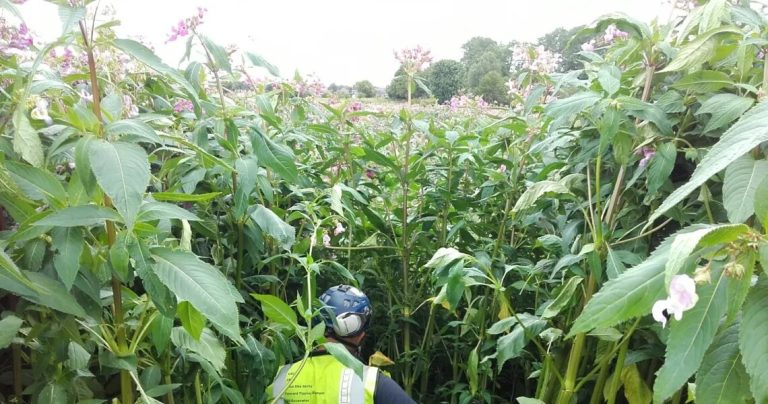
 Mike Clough
Mike Clough
Did you Pull this Weekend?
Author: Mike Clough
Date Posted: Tuesday 11th August 2015

0161 723 2000
8AM to 5PM

Author: Mike Clough
Date Posted: Tuesday 11th August 2015

The sun is out, and the weather finally looks like summer!
This is the perfect time to get out and help with local initiatives to reduce Himalayan balsam – one of the most widespread and environmentally damaging invasive species in England.
Himalayan balsam loves river corridors, areas of bare land, and woodlands (despite the relatively low light) – anywhere where its seeds can bed in, and quickly take over. Himalayan balsam is adept at crowding out native species, developing dense monoculture in summer – and bare soil in the winter, when the plant has died back. This bare soil is prone to erosion, and can cause problems and loss of habitat for native insects, mammals, birds and fish species.
Himalayan balsam is an annual plant, with a small, shallow root system. It grows up to three metres tall, and in late summer, produces seed pods which explode on contact – spreading the seeds up to seven meters through the air – and allowing them to reach water, and to be carried along for significant distances. Each plant dies completely at the end of the growing season each year, and infestations are maintained only through the seed bank – which can remain active for two years.
Using proper oversight, timing and controls, combinations of excavation and herbicide treatment are possible in most cases, and are generally effective – however, more sustainable and environmentally friendly measures are available, including strimming and hand-pulling.
Many voluntary organisations, parks and local councils organise teams of volunteers to head out each year at around this time (and often even after the plant has flowered), to pull the plant up by its roots – killing it before it has had chance to create seeds. If carried out repeatedly over the years, this can be an extremely effective means of control, and is basically completely environmentally friendly (so long as you don’t tread on any rare orchids or great crested newts!).
The main consideration when carrying out this type of works is to avoid contravening the Wildlife and Countryside Act 1981, which makes it an offence to cause or allow Himalayan balsam to spread in the wild, and the Environmental Protection Act 1990 (and Controlled Waste Regulations 2012), which stipulate how such plant waste should be managed if removed from site. You should always consult a competent professional before undertaking works involving invasive species, but in short, the measures volunteers need to take are:
Do clean the treads of your footwear, wheelbarrows and your tools and equipment etc. before moving from an infested area – this will prevent you from carrying seeds to infestation-free areas.
Don’t do anything to the plant once the seed heads have begun to form – you could spread the seeds. Inadvertently. Don’t remove any waste from the area that it was found – just pull the plant up, and place it back down where it was, with the roots out of the ground (or create a single stockpile in the middle of an infested area).
Do wear hats, appropriate clothing, sunscreen, knee pads and anything else you need to stay comfortable and safe while working outdoors. So why not see if your local park or woodland has a volunteer scheme in place? It’s a great chance to get some gentle exercise in the sun and improve your local environment without spending a penny.
Any volunteer organisations who would like advice on managing Himalayan balsam should contact Invasive Weed Solutions on 0161 723 2000 or [email protected]